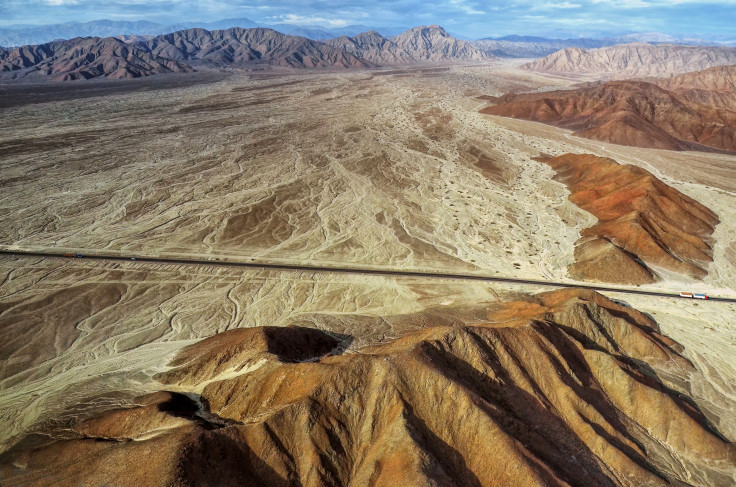
Many ancient geoglyphs, which are big designs etched into the ground, have been discovered in Peru.
A new technique was used by researchers for this. They used deep learning, which is a kind of artificial intelligence, to find the designs, reported Miami Herald.
The drawings date back thousands of years. A study recently published in the Journal of Archaeological Science revealed that they are part of a UNESCO World Heritage Site.
The geoglyphs are known as the Nazca Lines and were named after the desert they were discovered in. They can be hundreds of feet in size. They often depict animals like monkeys and hummingbirds, as per Yahoo! News.
They are located in southern Peru, which is approximately 260 miles southeast of Lima.
Researchers said that their purpose is not known. But it is believed that they were made for a ritual activity like ceremonial walking.
It was about 100 years ago when they were first found. Over the decades, more have been discovered. They were mostly found via aerial photographs that were taken from planes or balloons.
Researchers said that the ancient drawings stretch across large areas of the desert, but finding new ones is no cakewalk. That is because, from the ground, they are often not possible to spot. As for the process of scanning aerial photographs, it takes a lot of time. To make it less time-consuming, researchers at Yamagata University in Japan came up with a deep learning technique. It was trained to find the designs in satellite imagery, according to AOL.
Researchers said that deep learning is a kind of machine learning that "achieves great power and flexibility in pattern analysis of images, speech, language, and more."
They shared that in archaeology, it is used in the "analysis of the iconography, text, and writing of excavated objects."
In the past also, archaeologists had enlisted deep learning. But the researchers at Yamagata University faced many unique challenges while looking for new Nazca Lines. What posed a problem was the variability in geoglyph designs. Also, the small number available to train the technology created some obstacles.
Then researchers came up with a new approach. It involved training deep learning technology to spot geoglyphs that were based on small similarities to other designs rather than searching for perfect matches.
This method helped to detect four new geoglyphs. They depicted a pair of legs stretching more than 250 feet, a humanoid holding a club, a bird and a fish. The designs are "quite unique." Later, they were verified during on-site visits.
Researchers said that they could identify "new geoglyph's candidates approximately 21 times faster than with the naked eye alone."
They shared that the approach would be "beneficial for the future of archaeology in a new paradigm of combining field survey and Artificial Intelligence."
© 2025 Latin Times. All rights reserved. Do not reproduce without permission.



